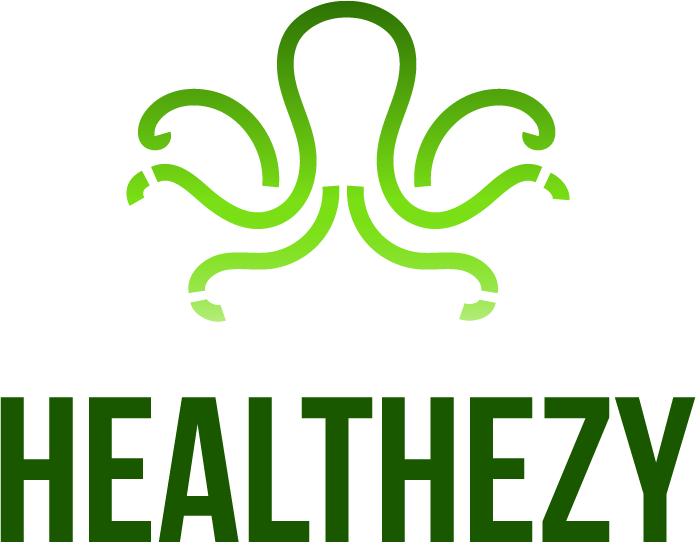Introduction to FDA risk management strategies
The introduction to FDA risk management strategies provides an overview of the approaches and measures implemented by the Food and Drug Administration to ensure the safety and quality of food products.
We want to familiarize readers with the importance of risk management in the food industry and the role of the FDA in mitigating potential hazards. By outlining the key objectives and principles of FDA risk management strategies, this article aims to enhance understanding and promote compliance with food safety regulations.
Importance of risk management in food products
Risk management plays a crucial role in ensuring the safety and quality of food products. With the increasing complexity of the global food supply chain and the ever-present threat of foodborne illnesses, it is essential for food manufacturers and regulatory agencies to implement effective risk management strategies.
By identifying potential hazards, assessing their likelihood and severity, and implementing appropriate control measures, risk management helps to prevent and mitigate risks that could pose harm to consumers.
It also helps to build consumer trust and confidence in the food industry by demonstrating a commitment to safety and quality.
Overall, the importance of risk management in food products cannot be overstated, as it is a fundamental aspect of ensuring the health and well-being of consumers.
Role of FDA in ensuring food safety
The role of the FDA in ensuring food safety is crucial. As the regulatory agency responsible for protecting public health, the FDA plays a vital role in developing and implementing risk management strategies for food products.
Through its rigorous inspection and monitoring programs, the FDA works to prevent foodborne illnesses and ensure the safety of the food supply. By setting and enforcing standards for food production, processing, and labeling, the FDA helps to minimize the risks associated with food consumption.
Additionally, the FDA conducts research and collaborates with other organizations to stay updated on emerging food safety issues and develop effective strategies to address them.
Overall, the FDA’s role in ensuring food safety is essential in safeguarding public health and promoting consumer confidence in the food industry.
Risk Assessment
Identifying potential hazards in food products
Food safety is a critical concern for the FDA, and they have implemented various risk management strategies to ensure the safety of food products. One of the key steps in this process is identifying potential hazards in food products.
The FDA conducts thorough inspections and assessments to identify any possible risks, such as microbial contamination, chemical hazards, or physical hazards.
By identifying these potential hazards, the FDA can take appropriate measures to prevent or mitigate any risks to public health. This proactive approach helps to safeguard consumers and maintain the integrity of the food supply chain.
Evaluating the severity and likelihood of risks
When evaluating the severity and likelihood of risks, it is important to consider various factors. The severity of a risk refers to the potential impact it can have on public health and safety. This includes the potential for illness, injury, or even death.
The likelihood of a risk refers to the probability of it occurring. This can be influenced by various factors such as the nature of the food product, its production process, and the potential for contamination.
By carefully evaluating both the severity and likelihood of risks, the FDA can develop effective risk management strategies to ensure the safety of food products.
Determining acceptable levels of risk
Determining acceptable levels of risk is a crucial step in FDA risk management strategies for food products. The FDA aims to ensure that the risks associated with food products are minimized and controlled to an acceptable level.
This involves evaluating various factors such as the nature of the food product, its intended use, and the potential health hazards it may pose. By setting acceptable levels of risk, the FDA can establish guidelines and regulations that help protect consumers and promote food safety.
Determining these levels requires careful analysis and consideration of scientific data, risk assessments, and input from experts in the field.
Ultimately, the goal is to strike a balance between allowing the availability of safe and nutritious food products while minimizing potential harm to consumers.
Risk Communication
Effective communication of risks to consumers
Effective communication of risks to consumers is crucial in ensuring the safety and well-being of the public. The FDA recognizes the importance of providing clear and accurate information about the potential risks associated with food products.
By effectively communicating these risks, consumers are empowered to make informed decisions about the foods they consume. This includes providing easy-to-understand labels, warnings, and educational materials that clearly outline the potential dangers and precautions to take.
Additionally, the FDA encourages open and transparent communication channels between manufacturers, retailers, and consumers, allowing for timely updates and the dissemination of important safety information.
By prioritizing effective communication, the FDA aims to protect consumers and promote trust in the food industry.
Labeling requirements for food products
Labeling requirements for food products include providing accurate and clear information about the product’s ingredients, nutritional content, allergens, and any potential health risks. The FDA has established guidelines for labeling that help consumers make informed choices about the foods they purchase.
These requirements ensure that consumers are aware of any potential risks associated with the consumption of certain food products, such as the presence of allergens or the use of certain additives.
By providing comprehensive and transparent labeling, the FDA aims to protect public health and promote consumer awareness and choice in the marketplace.
Educating consumers about potential risks
Food safety is a crucial aspect of the FDA’s risk management strategies. One of the key components of these strategies is educating consumers about potential risks.
By providing clear and concise information about the potential risks associated with certain food products, the FDA aims to empower consumers to make informed decisions about their food choices.
This education includes highlighting common allergens, explaining proper handling and storage practices, and raising awareness about potential contaminants. By actively engaging with consumers and promoting food safety education, the FDA plays a vital role in protecting public health and ensuring the safety of the food supply.
Risk Mitigation
Implementing preventive controls in food production
Implementing preventive controls in food production is crucial to ensure the safety and quality of food products. The FDA has established risk management strategies that help identify and address potential hazards in the production process.
These preventive controls include measures such as hazard analysis, monitoring, corrective actions, and verification procedures. By implementing these controls, food manufacturers can prevent contamination, minimize the risk of foodborne illnesses, and comply with regulatory requirements.
Additionally, preventive controls contribute to building consumer trust and confidence in the safety of the food supply chain.
Monitoring and verification of risk mitigation measures
Monitoring and verification of risk mitigation measures is a crucial step in ensuring the safety and quality of food products. This process involves regularly assessing and evaluating the effectiveness of the implemented risk management strategies.
By monitoring and verifying the measures, the FDA can identify any potential weaknesses or gaps in the system and take appropriate actions to address them. This helps in preventing any potential hazards or contamination that could pose a risk to consumers.
Through continuous monitoring and verification, the FDA can ensure that food products meet the required safety standards and regulations, providing consumers with confidence in the products they consume.
Recall procedures for contaminated food products
Recall procedures for contaminated food products involve a series of steps that are crucial in ensuring the safety of consumers. The first step is to identify the contaminated product and determine the extent of the contamination.
This is followed by notifying the appropriate regulatory authorities and initiating a recall plan. The recall plan includes removing the affected products from the market, notifying distributors, retailers, and consumers about the recall, and providing instructions on how to return or dispose of the contaminated products.
Additionally, the FDA works closely with the food industry to monitor the effectiveness of the recall and to prevent further distribution of the contaminated products. These recall procedures are essential in safeguarding public health and maintaining consumer confidence in the food supply chain.
Conclusion
Importance of FDA risk management strategies
The importance of FDA risk management strategies cannot be overstated. With the increasing complexity of food production and distribution systems, it is crucial to have effective measures in place to ensure the safety of food products.
The FDA plays a vital role in protecting public health by implementing risk management strategies that identify, assess, and mitigate potential hazards in the food supply chain. These strategies help to prevent foodborne illnesses, contamination, and other safety issues, ultimately safeguarding consumers and promoting confidence in the food industry.
By adhering to FDA risk management strategies, food manufacturers and suppliers can demonstrate their commitment to producing safe and high-quality products, while also complying with regulatory requirements. Overall, the implementation of FDA risk management strategies is essential for maintaining the integrity of the food supply and protecting the health and well-being of consumers.
Continuous improvement in food safety
Continuous improvement in food safety is essential for the FDA’s risk management strategies for food products. The FDA recognizes the importance of staying up-to-date with the latest scientific research and industry best practices to ensure the safety of our food supply.
Through continuous monitoring, evaluation, and feedback, the FDA can identify areas for improvement and implement measures to enhance food safety standards. This commitment to continuous improvement helps to protect the public health and maintain consumer confidence in the safety of the food products we regulate.
Collaboration between FDA and food industry
The collaboration between FDA and the food industry plays a crucial role in ensuring the safety and quality of food products. By working together, the FDA and food industry can exchange information, share best practices, and address emerging issues in a timely manner.
This collaboration fosters a proactive approach to risk management, allowing for the implementation of effective strategies to prevent and mitigate potential hazards. Through regular communication and cooperation, the FDA and food industry can enhance consumer protection and promote public health.
This partnership serves as a valuable tool in safeguarding the integrity of the food supply chain and maintaining the trust of consumers.
This was an in depth overview of the FDA Risk Management Strategy, thanks or reading. Follow for more fascinating information regarding the FDA.
For more information on the FDA, you can go to their official website.
About the Author
Zovinar is a seasoned Food Regulatory Affairs Professional, with over two decades of experience in advocating for consumer protection and product safety. Her academic prowess is grounded in a Bachelor of Honors in Science from the University of Toronto and further enriched by a Master’s in Arts from York University and a Master’s of Science from Northeastern University. These qualifications have been instrumental in shaping her as an expert in food safety and regulation.
At the heart of Zovinar’s career is a deep-rooted passion for ensuring consumer safety and advocating for their rights. Her commitment to these principles is evident in her approach to providing well-researched, scientifically-backed information through her dedicated website. This platform reflects not just her extensive knowledge and experience, but also her dedication to promoting transparency and quality in the food and product safety industry.
Join Zovinar on her mission to safeguard consumer interests and uphold the highest standards in food regulatory affairs.







